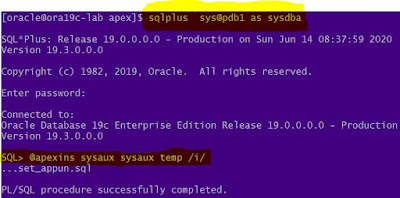Uninstalling ORDS from Database
Hello Guys!! Oracle REST Data Service (ords) is used as alternative to Oracle HTTP server (OHS) proxy web server that uses mod_plsql. In this post I would like ot share my experience on how to uninstall the ORDS from the Database. Before uninstalling you should aware of the following: Where is the ords.war exists JDK installed path (JAVA_HOME From which Database it need to uninstall Syntax: Navigate to the ORDS extracted directory which was previously used: java -jar ords.war uninstall ORDS Uninstallation Issue The challenge we faced during the ORDS uninstall $JAVA_HOME/bin/java -jar ords.war uninstall Enter the name of the database server [localhost]: Enter the database listen port [1521]: Enter the database service name [ORCL]: Please login with SYSDBA privileges to verify Oracle REST Data Services schema. Installation may be required. Enter the username with SYSDBA privileges to verify the installation [SYS]: Enter the database password for SYS: Confirm password: Jun 15...
